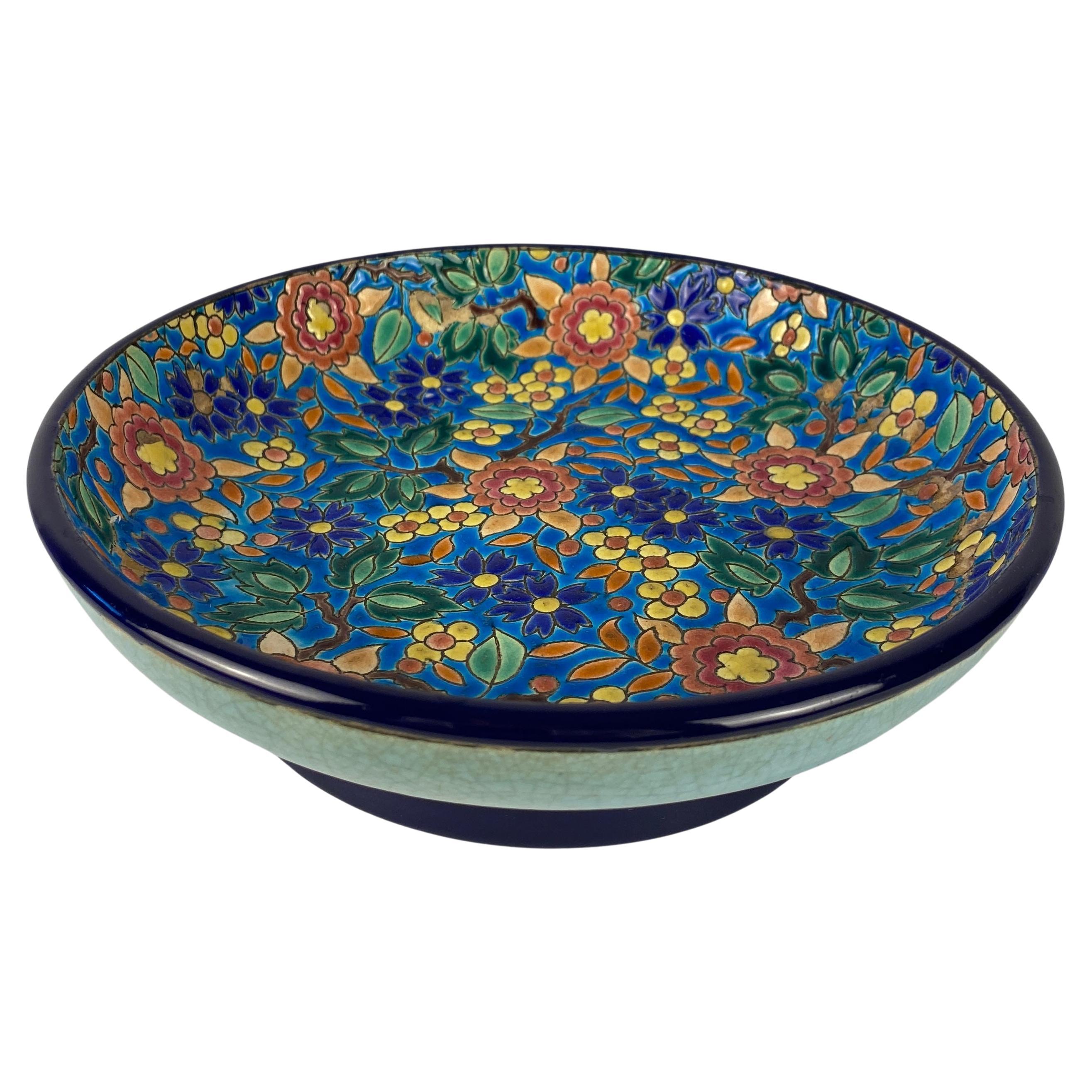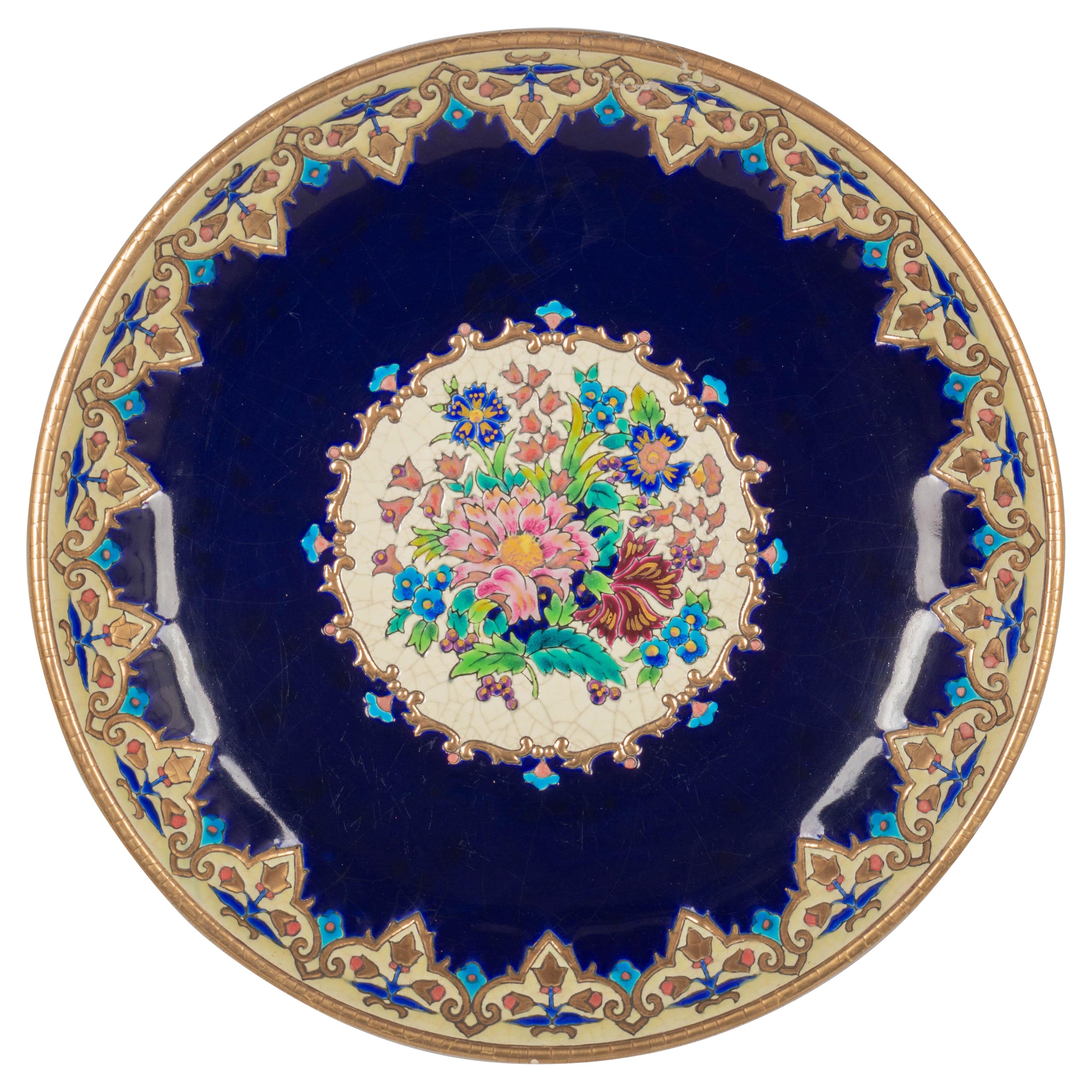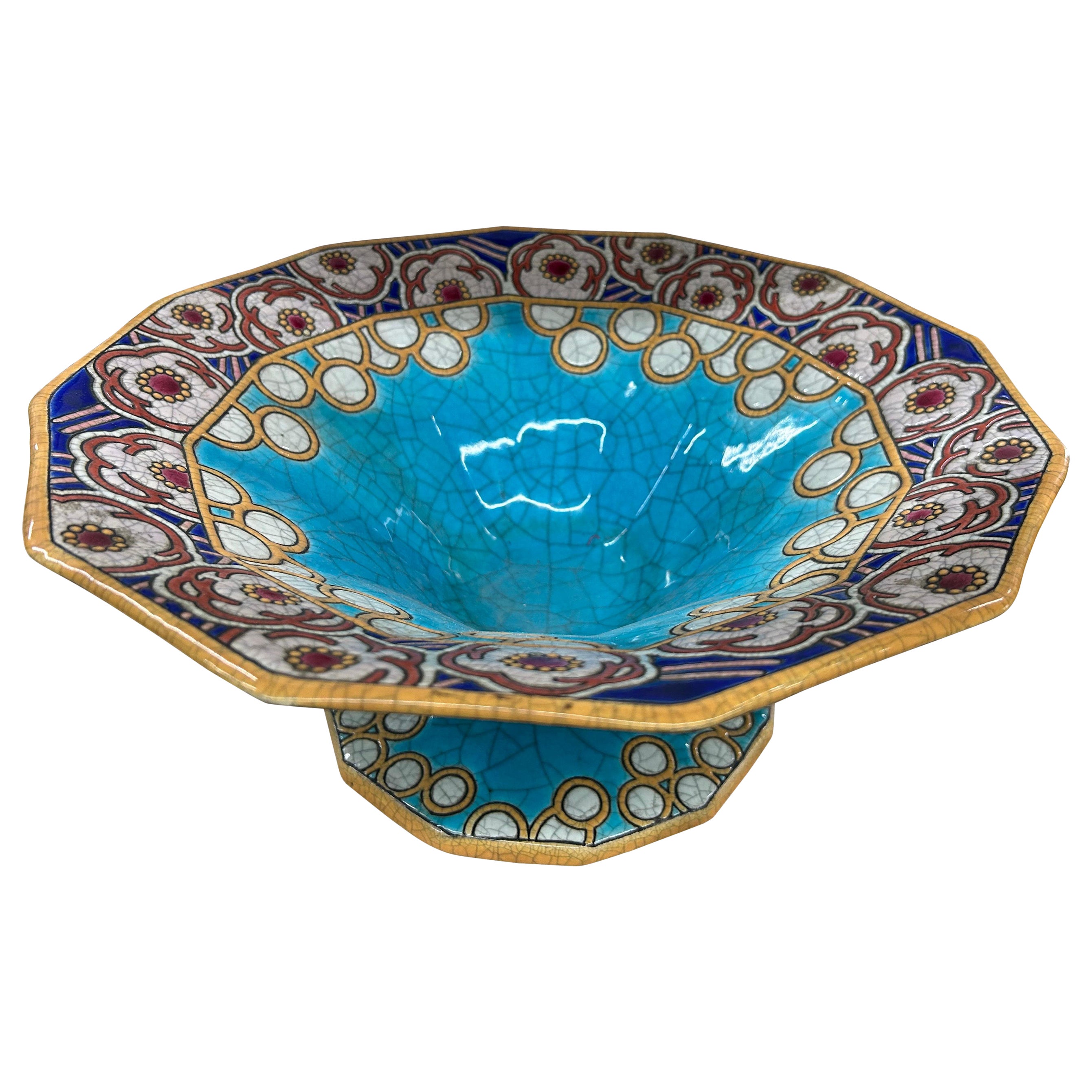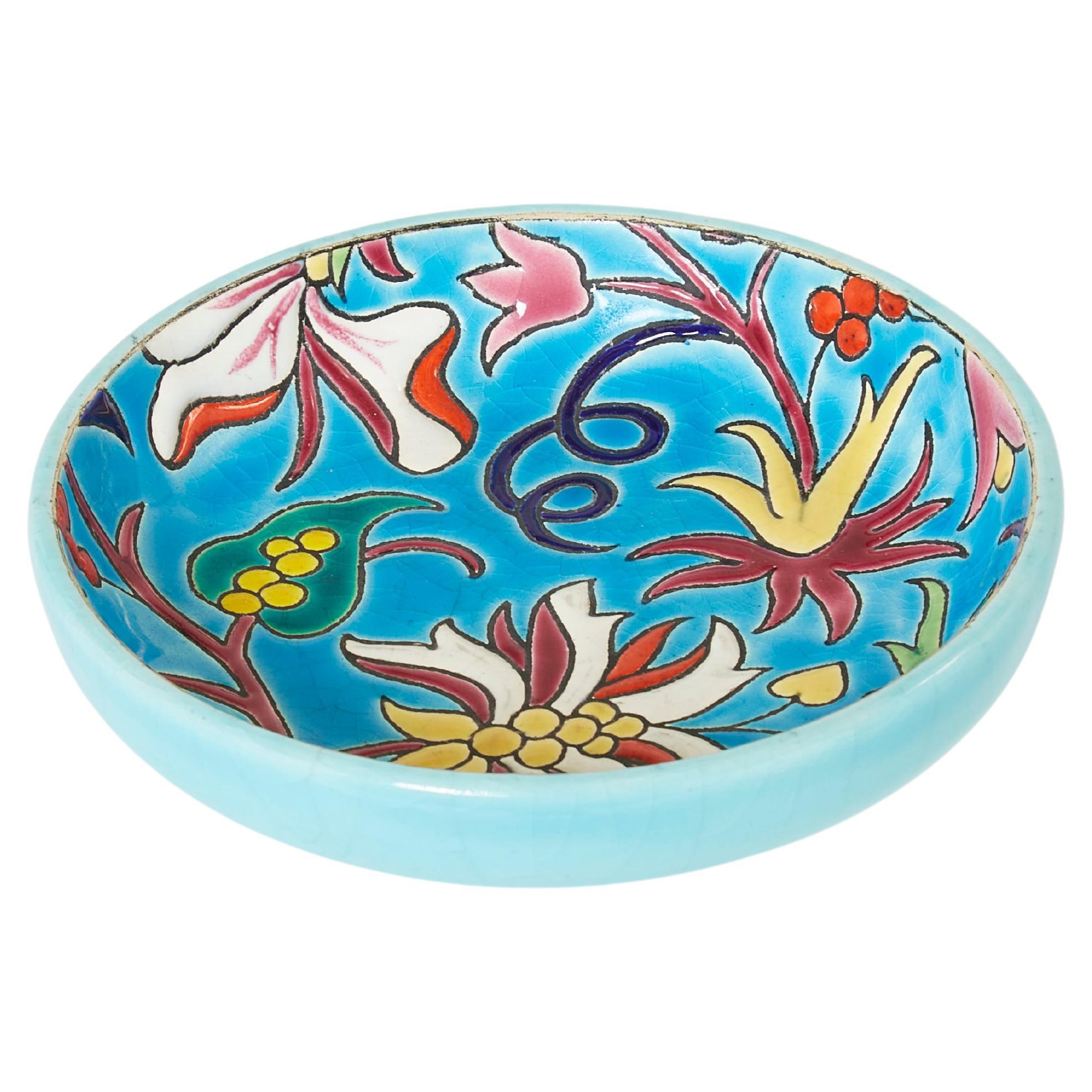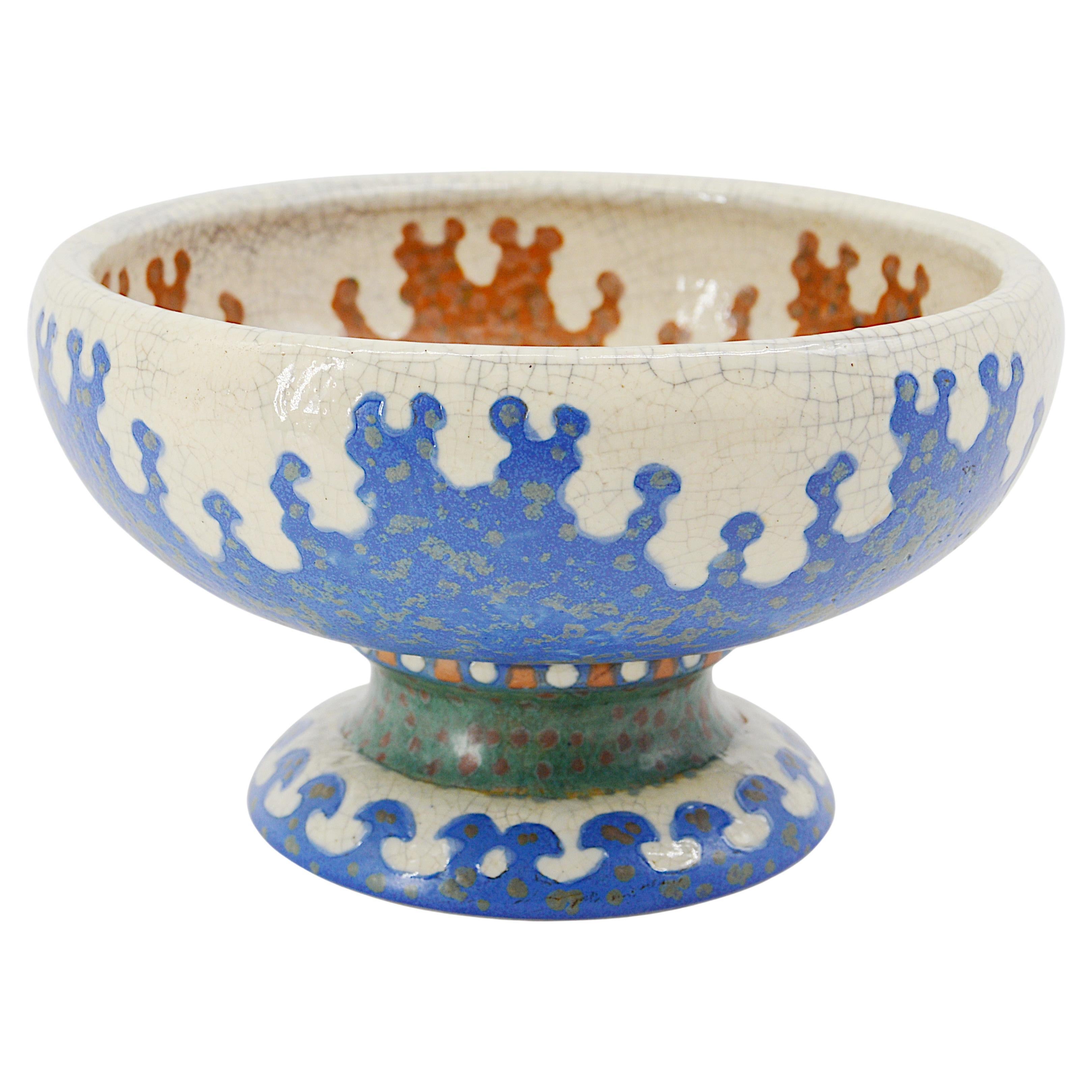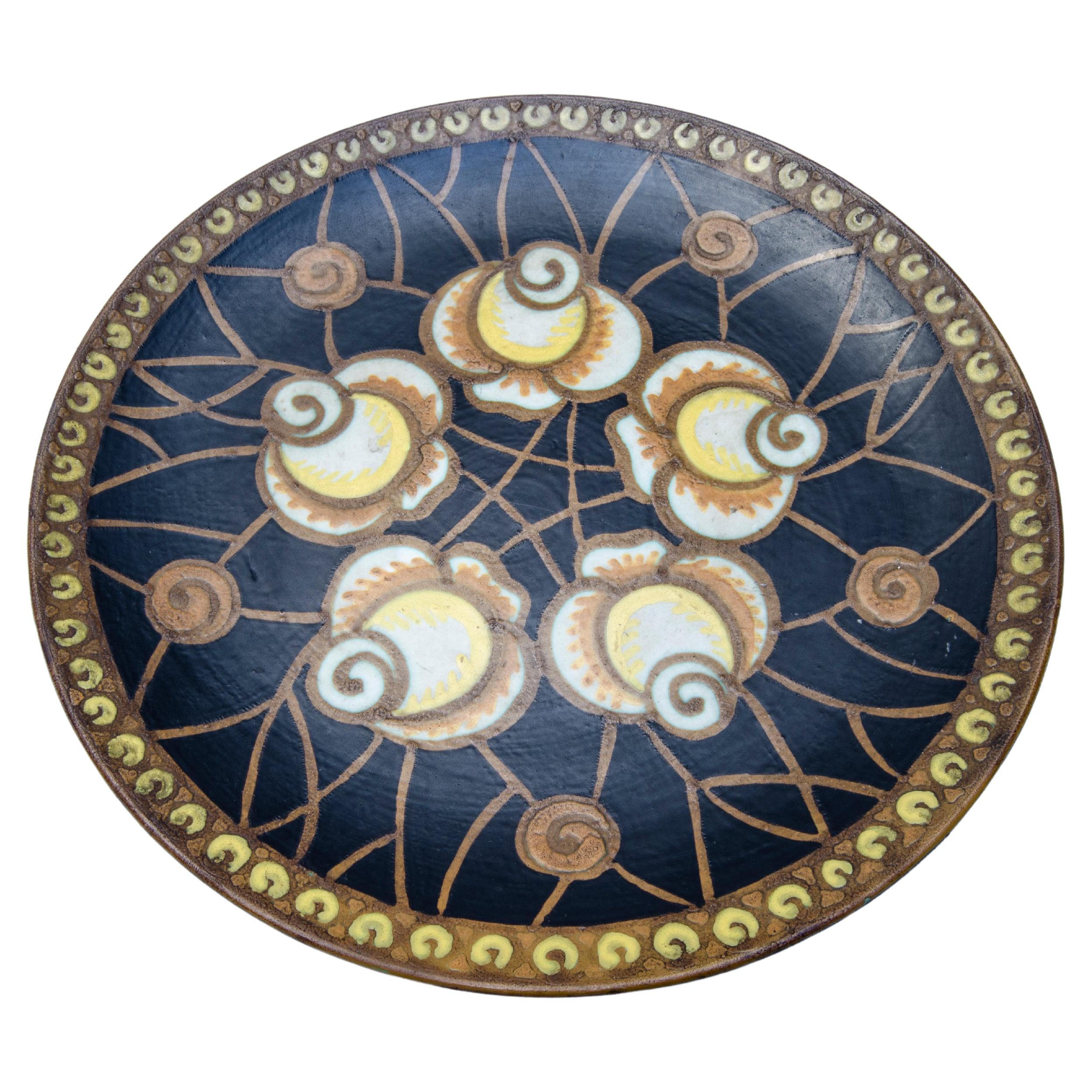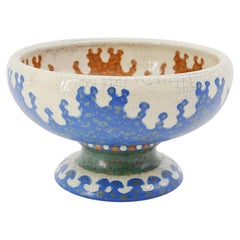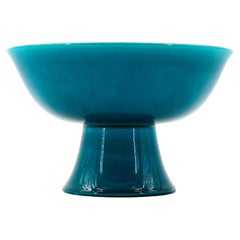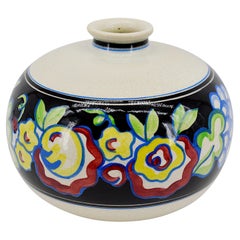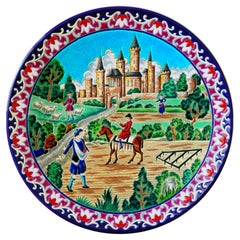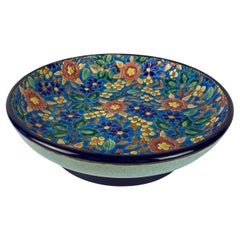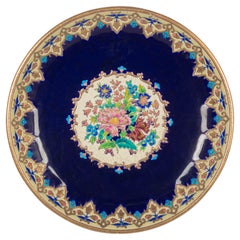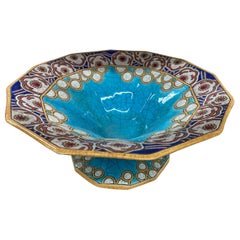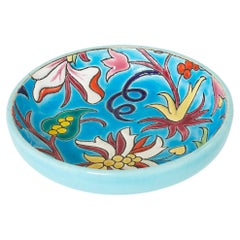Items Similar to Longwy French Art Deco Ceramic Bowl, 1920
Want more images or videos?
Request additional images or videos from the seller
1 of 7
Longwy French Art Deco Ceramic Bowl, 1920
$980
£752.90
€865.07
CA$1,378.49
A$1,548.67
CHF 809.18
MX$18,902.28
NOK 10,274.28
SEK 9,671.07
DKK 6,455.48
About the Item
French Art Deco ceramic bowl by Longwy, France, 1920s. Measures: Diameter 10.6" (26.9cm), height 3" (7.7cm). Incised mold number "3021" and stamped pattern number "D.5415", 1925 Longwy stamp.
Charles Régnier is at the origin of the foundation of the Faïenceries de Longwy. He set up the factory in a former Carmelite convent that had become national property. Production is limited to classic pieces such as table services.
Emperor Napoleon I, on his return from his visit to the Vauban fortifications around the upper town of Longwy, ordered table services for the Maisons d'éducation de la Légion d'honneur.
Around 1814-1815 production stopped due to economic difficulties mainly due to the Napoleonic wars and the siege of the city by the Prussians. Faced with a partial restart of the activity, Charles Régnier decided to sell the company in 1816. The earthenware factory was then acquired by Jean-Antoine de Nothomb, former colonel of a regiment of cuirassiers, married to Marie-Catherine Boch. This is the daughter of Pierre-Joseph Boch, owner of the earthenware factories of Audun-le-Tiche and Septfontaines. De Nothomb was able to benefit from the advice of his father-in-law and he developed marketing and production with new pastes and fine white enamel until 1835, the date of his death.
His daughter Marie-Catherine Nothomb, is the wife (1832) of Henri-Joseph d'Huart, Belgian baron, who therefore logically takes the head of the factory left in inheritance to his wife. Inventive and enterprising, he improved manufacturing techniques and modernized the company and the workshops, notably with the use of coke ovens. It innovates with a new glaze and adopts earthenware printing techniques. This period will be abundant in awards and honorary medals on the occasion of numerous exhibitions in Paris and in the provinces. In 1866, he passed the business on to his two sons Fernand and Hippolyte.
Around 1870, the two sons of Henri-Joseph, both from Central, were in charge of the pottery. On the back of the pieces produced, they put their coat of arms recognizable by their holly leaves. In response to the French craze for cloisonné products from the Far East, they would have called on Amédée de Caranza, a French artist born in Constantinople, whom various works place in Gien around 1870, at the Creil & Montereau factory. from 1876 to 1877 and with Vieillard in Bordeaux from 1878 (source Bordeaux Histoire d'une Collection par Claude Mandraut). Nothing proves its passage in Longwy except the fact that there are similarities of production in Longwy and Bordeaux in the technique of cloisonné with the syringe and that one allots a dish to him (with the tigers) visible at the Municipal Museum of Longwy. The famous Émaux de Longwy were born. They become the specialty of the city.
In 1885, still in response to the invasion of Asian products in the field of pottery, earthenware is looking for new decorations in Chinese, Japanese, Iznik, Persian or Egyptian trends. Several patterns are emerging, including a scattering of white and pink apple blossoms on a cerulean blue background, of Japanese inspiration. This decoration, referenced to the pottery under the number D188notes 3, marks the beginning of a fruitful period. It is still produced today in its original or revisited version.
The two d'Huart brothers also brought in many ceramists, painters or sculptors such as Charles Rudhart (1829-1895), Aristide Croisy, Carrière, Ernest Quost, Carl Schuller, Cirode or Paul Émile Morlon to modernize the production which would mark their mark in impressionist works in the so-called slip technique. The enamels in blue of Sèvres will often be the work of Louis Ernie. Also born during this period other production techniques such as majolica, brocatelle, grand feu, flame.
The end of the 19th century will be a very rich period for pottery and composed of prestigious works and majestic artistic talent.
From 1918, the Art Deco style opened up new artistic perspectives for earthenware, particularly through the association with the “Primavera” art workshop in the Printemps stores. During this period, many artists such as Claude Lévy, Jean Luce (1895-1964), Jean Olin or Raymond Chevallier (1900-1959) collaborated with the Émaux de Longwy and created more modern and geometric shapes. The highlight of this period is the participation in the International Exhibition of Modern Decorative and Industrial Arts of 1925.
The crash of 1929 in the United States reached France in the years 1930-1931: activity was reduced and personnel decreased. In 1939, the activity ceased due to the exodus.
In 1945, the company restarted with two hundred and fifty workers. Maurice Paul Chevallier (1892-1987), cousin of Raymond Chevallier, took over the artistic direction, helped by Paul Mignon (1930-2012), France's best young apprentice decorator who became responsible for the Artistic Workshops in 1972. The abandonment of production of table services will be effective in the 1950s.
In 1972, Christian Leclercq, a former student of Maurice Paul Chevallier, was awarded Meilleur Ouvrier de France. He joined the earthenware factory in 1961, where he created an important artistic work until he filed for bankruptcy in 1976.
During this period other artists will be added such as Rolande Rizzi (born in 1927 in Longwy), Hélène Gabet (1914-2016), Jean Rabet, or Louis Valenti (died in 1999), without forgetting the talent of boosters like Léa Valenti (born June 16, 1939), Justin Masson (1882-1959) and the best known Albert Kirchtetter (1910-1976) whose pieces bear his initials "A K".
Around 1975, despite efforts to adapt to the market, the company in difficulty put on sale the collections of historical works which will be partly pre-empted by the municipality of Longwy, forming the basis of the future municipal museum. This action was not enough, and the pottery filed for bankruptcy in 1976.
- Creator:Faïenceries et Emaux de Longwy (Maker)
- Dimensions:Height: 3.04 in (7.7 cm)Diameter: 10.6 in (26.9 cm)
- Style:Art Deco (Of the Period)
- Materials and Techniques:Ceramic,Enameled
- Place of Origin:
- Period:
- Date of Manufacture:1920
- Condition:
- Seller Location:Saint-Amans-des-Cots, FR
- Reference Number:1stDibs: LU2312341080262
About the Seller
5.0
Platinum Seller
Premium sellers with a 4.7+ rating and 24-hour response times
Established in 2003
1stDibs seller since 2016
490 sales on 1stDibs
Typical response time: 1 hour
- ShippingRetrieving quote...Shipping from: Saint-Amans-des-Cots, France
- Return Policy
Authenticity Guarantee
In the unlikely event there’s an issue with an item’s authenticity, contact us within 1 year for a full refund. DetailsMoney-Back Guarantee
If your item is not as described, is damaged in transit, or does not arrive, contact us within 7 days for a full refund. Details24-Hour Cancellation
You have a 24-hour grace period in which to reconsider your purchase, with no questions asked.Vetted Professional Sellers
Our world-class sellers must adhere to strict standards for service and quality, maintaining the integrity of our listings.Price-Match Guarantee
If you find that a seller listed the same item for a lower price elsewhere, we’ll match it.Trusted Global Delivery
Our best-in-class carrier network provides specialized shipping options worldwide, including custom delivery.More From This Seller
View AllRevernay French Art Deco Stoneware Bowl, 1920
By Revernay Sarreguemines Digoin
Located in Saint-Amans-des-Cots, FR
French Art Deco stoneware bowl on pedestal by REVERNAY (Digoin), France, 1920s. Height : 12.5cm - 5 inches, Diameter : 21.2cm - 8.3 inches. Marked "Revernay 160 3" under the base (se...
Category
Vintage 1920s French Art Deco Decorative Baskets
Materials
Stoneware
Paul Milet French Art Deco Ceramic Bowl, 1920
Located in Saint-Amans-des-Cots, FR
French Art Deco Ceramic Bowl by Paul Milet, Sèvres, France, 1920s. This elegant French Art Deco ceramic bowl, created by Paul Milet in the 1930s, is a beautiful example of the refined craftsmanship for which the porcelain at Sèvres is renowned. The bowl features Milet's signature style, with sleek, modern lines and a timeless design that exemplifies the sophistication of the Art Deco era.
Dimensions: Height: 17 cm (6.7 in), Diameter: 27 cm (10.7 in). The bowl is stamped under the base "PM Sèvres Made in France" (see photo), along with a retailer label (see photo).
This piece is a perfect addition to any collection of French Art Deco ceramics...
Category
Vintage 1920s French Art Deco Decorative Bowls
Materials
Ceramic
French Art Deco Vase at Sainte-Radegonde, 1920
By Sainte Radegonde
Located in Saint-Amans-des-Cots, FR
French Art Deco ceramic vase at Sainte-Radegonde, France, 1920s. Crackle glaze ceramic vase with a wide belt made of strongly stylized flowers and fruits . Height: 8.7"(22cm), Width:...
Category
Vintage 1920s French Art Deco Vases
Materials
Ceramic
Longwy Mid-Century Enameled Ceramic Wall Platter, Limited Edition, 1950s
By Faïenceries et Emaux de Longwy
Located in Saint-Amans-des-Cots, FR
This exceptional mid-century French glazed ceramic wall dish is a captivating piece from the Manufacture de Longwy, made in the 1950s. It is part of a limited edition, with only 18 o...
Category
Vintage 1950s French Mid-Century Modern Platters and Serveware
Materials
Ceramic
Andre Delatte French Art Deco Fruit Bowl, Center Bowl, 1920
By Andre Delatte
Located in Saint-Amans-des-Cots, FR
French Art Deco fruit bowl, center bowl by Andre Delatte (Jarville, near Nancy), France, 1920s. Mottled glass. Measures: Width : 19.9"(50.5cm), height : 9.4" (23.8cm), depth : 10.4"(...
Category
Vintage 1920s French Art Deco Decorative Baskets
Materials
Wrought Iron
Establishments Lucien Fontaine and Daum French Art Deco Center Table Bowl, 1920
Located in Saint-Amans-des-Cots, FR
Art Deco center bowl by establishments Lucien Fontaine, 142, rue de Charonne, Paris, France, circa 1920. The blown double glass (called "pate-de-verre") bowl was made by Daum (Croism...
Category
Vintage 1920s French Art Deco Decorative Bowls
Materials
Wrought Iron
You May Also Like
Longwy French Art Deco Ceramic Bowl
By Faïenceries et Emaux de Longwy
Located in Miami, FL
A stunning Art Deco period faience bowl, made in France by the Emaux de Longwy art pottery workshop and dating circa 1920-30s. This earthenware bowl is hand-decorated with Chinoiseri...
Category
Early 20th Century French Art Deco Vases
Materials
Enamel
$1,200 Sale Price
20% Off
French Longwy Cloisonné Enamel Ceramic Bowl
By Faïenceries et Emaux de Longwy
Located in Winter Park, FL
A French Art Deco Longwy large ceramic centerpiece bowl, hand-painted in the style of Chinoiserie cloisonné enamel. Dark cobalt blue ground with ...
Category
20th Century French Art Deco Delft and Faience
Materials
Ceramic
French Art Deco Compote Or Bowl By Longwy
By Faïenceries et Emaux de Longwy
Located in Houston, TX
French Art Deco Compote Or Bowl By Longwy.
Stunning French Art Deco Footed Bowl By Émaux de Longwy with a floral perimeter and crackle finish. Our lovely French Art Deco decorative ...
Category
Vintage 1920s French Art Deco Decorative Bowls
Materials
Faience
Blue Flowers Art Deco Bowl Emaux de Longwy, 1950
By Faïenceries et Emaux de Longwy
Located in Paris, IDF
Colourful ceramic Art Deco round bowl by Faïenceries et Emaux de Longwy made around 1950. This turquoise blue bowl features beautiful fl...
Category
Vintage 1950s French Art Deco Decorative Bowls
Materials
Ceramic
Polychrome Ceramic Plate by Charles Catteau
By Charles Catteau
Located in Ciudad Autónoma Buenos Aires, C
Polychrome ceramic plate with a design of stylized floral motifs in black, yellow, orange, brown and white. This plate is illustrated in: L'homme de Keramis, Charles Catteau de Dominique Corrieras, by Charles Catteau (1880-1966).
Signed CH Catteau, D 954, NY, Boch Freres, Keramis Made belgium...
Category
Vintage 1920s Belgian Art Deco Decorative Bowls
Materials
Ceramic
Ceramic fruit bowl by LONGWY
By Faïenceries et Emaux de Longwy
Located in Ciudad Autónoma Buenos Aires, C
French Art Deco ceramic fruit bowl, crackle technique with relief drawings.
Signature LONGWY Société Des Fatencertes.
France, CIRCA 1930.
Category
Vintage 1930s French Art Deco Vases
Materials
Ceramic
More Ways To Browse
Antique French Medals
French Market Collection Furniture
French Market Collection
Antique Bedroom Sets 1920
French 1920 Ceramic
1945 Antique Dining Room Set
Art Deco Medals
Art Deco Bedroom Set 1920
1920 French Bedroom Set
International Exhibition Of Modern Decorative And Industrial Arts
French Art Deco Pottery
Antique Pink Bowl
Antique French Ceramic Marks
Dior Bowl
Art Deco Ceramic Head
Ceramic Apple
Ceramic Face Head
France Pottery Bowl
